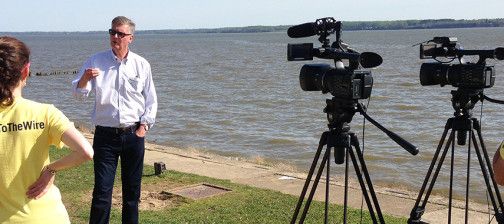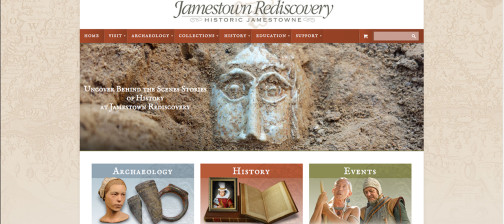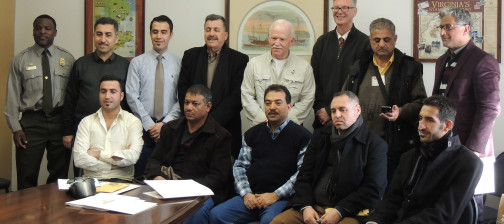US Secretary of the Interior Ken Salazar visited the James Fort site to see the latest archaeological discoveries on June 29, 2011.
He toured all three open features: the extension of a palisade east of the triangular 1607 fort, the 1608 church within the fort, and a Confederate bomb shelter built in 1861. Two of those sites yielded finds just hours before Salazar arrived.
“So this is your site,” he said when introduced to Dr. William M. Kelso, director of archaeological research at Historic Jamestowne.
“It’s America’s site,” Kelso answered. Kelso then led Salazar and his entourage of National Park Service officials around the footprint of the first permanent English settlement in North America. Salazar is the highest-ranking federal official to visit the Jamestown Rediscovery dig since 2007.
Salazar and National Park Service Director Jon Jarvis were on the Peninsula to meet community leaders and the public about bringing an NPS unit to Fort Monroe in Hampton after the Army departs from the base in September.
Historic Jamestowne is owned and managed through a private/public partnership. The Association for the Preservation of Virginia Antiquities (Preservation Virginia) acquired 22.5 acres in 1893 and retains the private ownership of that land. The National Park Service acquired the remaining 1500 acres on Jamestown Island in 1934.
As he overlooked the 1608 church feature, Salazar asked Jamestown Rediscovery staff archaeologist Danny Schmidt about brick markings in the soil. Schmidt said the debris was deposited there after the investigation and construction surrounding the 1907 church just east of the James Fort site.
“Some of America’s earliest archaeologists were the women of the Association for the Preservation of Virginia Antiquities,” Schmidt told him.
The soft-spoken Salazar also asked who is likely buried in the eastern end of the 1608 church.
“That would be the ‘who’s who’ of who died during the history of the church, from 1608 to 1617. That’s the mystery,” Schmidt said.
Work on the church site with the 2011 Field School students has been going for several weeks, and earlier in the day some iron artifacts were pulled from a church post mold in the ground near the outlined graves.
After a few minutes, Salazar thanked Schmidt, “Keep up the great work and your enthusiasm.”
Staff archaeologist Dave Givens then showed Salazar the day’s find at the Confederate bomb shelter: the outlines of 13 sandbags that soldiers used in construction of the shelter. The bags themselves are gone, but the sand used to fill them still holds the bag shape in the ground.
Before becoming head of the Department of the Interior in 2009, Salazar was a U.S. senator for Colorado. He was attorney general for Colorado from 1999 to 2005. Salazar’s biography on the Interior web site says his family “settled in the American West before the United States was a country.” His family planted roots in Colorado’s San Luis Valley, where they have farmed and ranched the same land for five generations and where Salazar grew up without electricity or telephone.
Historic Jamestowne is jointly administered by the National Park Service and Preservation Virginia to preserve the original site of the first permanent English settlement in the New World.





